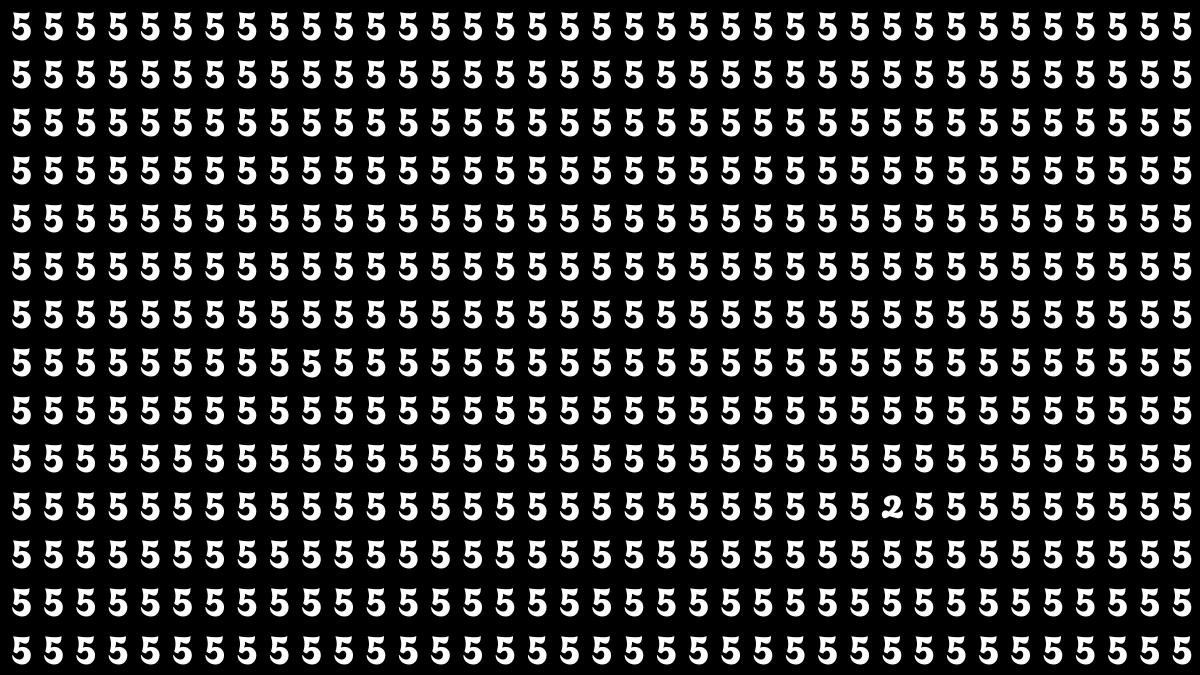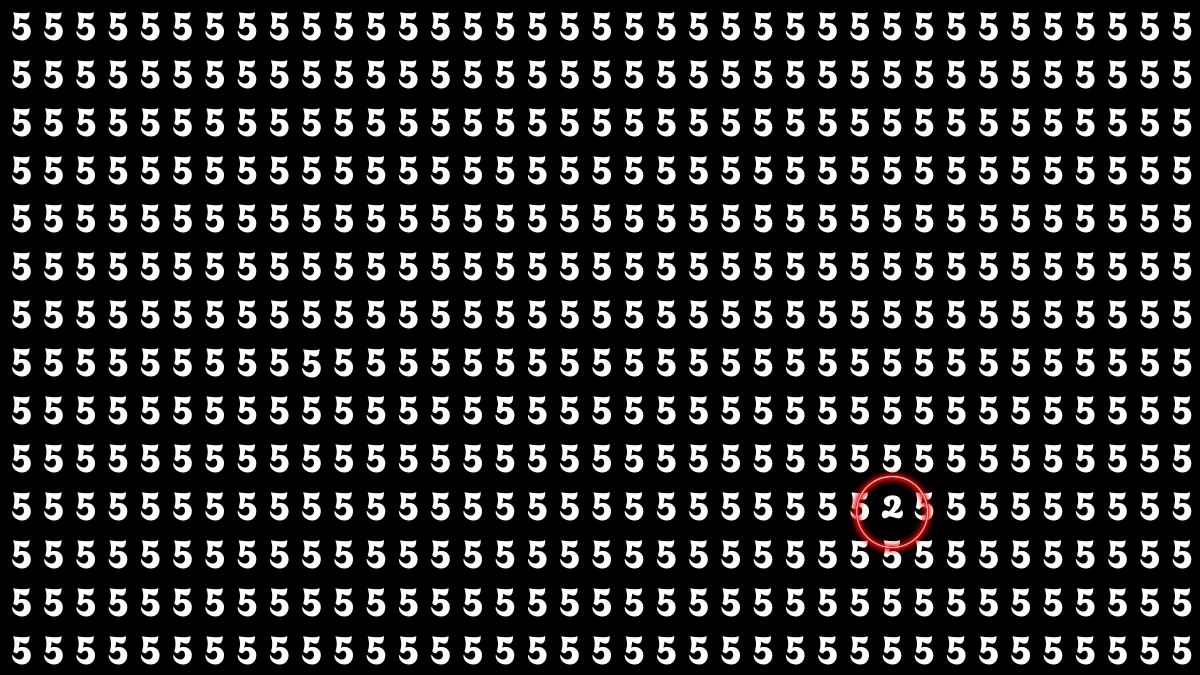Optical Illusion
An optical illusion is a visual phenomenon where the perception of an image differs from reality. It tricks the brain into seeing something that isn't actually present or interpreting an image in a misleading way.
This happens because our brain processes visual information based on past experiences, patterns, and assumptions.
For example, certain illusions might make still images appear as if they are moving, or make objects look larger or smaller than they really are.
Optical illusions can be caused by the way colors, shapes, and lines are arranged, or how light and shadows interact.
They highlight the fascinating ways in which our brain interprets the world, often revealing that what we see is not always what is truly there.
Optical Illusion IQ Test: Are You A Genius? Within 6 Seconds Spot The Number 2 among 5
This optical illusion IQ test challenges your observation skills by asking you to spot the number 2 hidden among a grid full of 5s.
At first glance, all the numbers may look identical, but with careful focus and quick thinking, you’ll notice the subtle difference.
The goal is to find the number 2 within just 6 seconds—a task that tests your visual sharpness and attention to detail.
These types of puzzles stimulate your brain and improve concentration, making them both fun and beneficial. If you successfully spotted the number 2 quickly, that’s a sign of strong perception skills.

Optical Illusion IQ Test: Are You A Genius? Within 6 Seconds Spot The Number 2 among 5 - Solution
This optical illusion IQ test challenges your observation skills by asking you to spot the number 2 hidden among a grid of number 5s within 6 seconds.
At first glance, the image appears to be filled entirely with the number 5, making it a tricky visual puzzle. However, upon closer inspection, you’ll notice that one character is subtly different.
The number 2 is cleverly camouflaged and blends into its surroundings, testing your attention to detail and visual perception.
In the image, the number 2 is located toward the bottom right corner and is circled in red to highlight its position. Successfully spotting it within the time limit is considered a sign of sharp focus and high observational intelligence.






